
Any workplace that uses hazardous chemicals needs to have updated chemical labels that reflect the Globally Harmonized System (GHS) standard for chemical labeling adopted by OSHA in 2012. These labeling requirements became mandatory in the U.S. on June 1, 2016.
GHS labels contain several sections that are necessary to adequately alert employees of the dangers that exist with a particular chemical. Once that information is obtained, the person in charge of creating those labels will know how to format them. Furthermore, acquiring that information makes label creation a quick and easy task, with the ultimate goal of ensuring safety for everyone within the area.
How to Make GHS Labels in 3 Steps
There are three main steps to take when looking to create GHS labels for hazardous chemicals, they are included in the following:
1. Becoming Familiar with the GHS Label Format and Safety Data Sheet Contents
Globally Harmonized System labels must include six key elements to comply with OSHA's Hazard Communication (HazCom) 2012 standard. Every GHS label or container must contain the following elements:
- 1) Product Name or Identifier: States the chemical's name so viewers see it right away.
- 2) GHS Signal Word: Allows users to quickly determine the chemical's hazard level at a glance.
- 3) Hazard Pictograms: Visually convey the hazards of the chemical.
- 4) Hazard Statements: Phrase(s) that describe the hazards inherent to the chemical. These should be located within the safety data sheet and are defined with an H-Code (e.g. H-101).
- 5) Precautionary/First Aid Statements: Phrases related to each Hazard Statement that provide instructions for use or first aid information. Much like Hazard Statements, these will be defined with a P-Code on the SDS Sheet (e.g. P-101).
- 6) Manufacturer Information: States the manufacturer's name, address, and phone number.
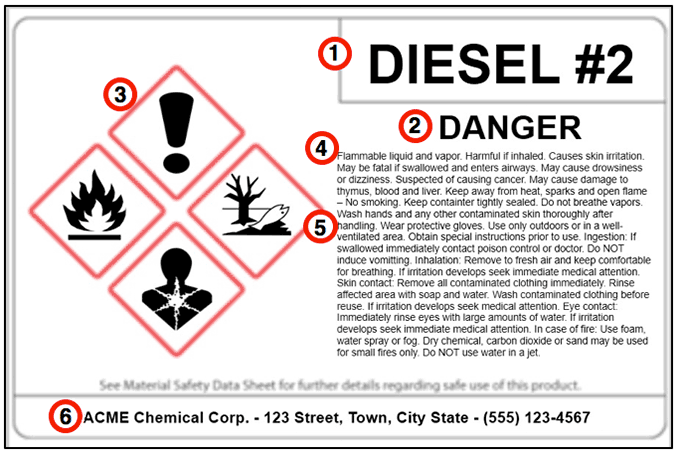
GHS Pictograms
GHS pictograms are useful because images often take less time to “read” than going through all the small text on a label. This does not mean an employee shouldn’t read the label’s text, but rather pictograms can be used to quickly identify the properties of a substance at a glance. In total, there are nine GHS pictograms that identify risk in three categories: Physical, health, and environmental. A single label may contain one or multiple pictograms depending on the hazards presented by the chemical. Concise and easy to read information is the epitome of visual communication, and pictograms do just that.

Exclamation Mark
Irritant (Skin & Eye), skin sensitizer, acute toxicity, narcotic effects, and respiratory tract irritant
Gas Cylinder
Gases under pressure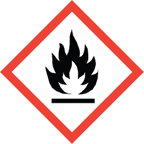
Flame
Flammables, self-heating/reactives, emits flames, organic peroxides, pyrophoric
Flame Over Circle
Oxidizers
Corrosion
Skin corrosion, eye damage, corrosive to metals
Skull and Crossbones
Toxic or fatal toxicity
Exploding Bomb
Explosives, self-reactives, organic peroxides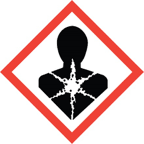
Health Hazard
Carcinogen, reproductive toxicity, respiratory sensitizer, target organ toxicity, aspiration toxicity, mutagenicity
Environment (Non-Mandatory)
Aquatic toxicitySafety Data Sheets (SDS)
The information needed to make a GHS label can be found on a chemical's safety data sheet, also known as an SDS. This document should be given to the user by the manufacturer to ensure they are aware of the potential hazards. All the necessary details can be found in sections 1 and 2 titled "Product and Company Identification" and "Hazards Identification.” Those creating GHS labels should look for the manufacturer’s information, required pictograms, H/P-codes, as well as any relevant first aid, handling, and storage instructions.
- Section 1: Product and Company Identification - Product Name, CAS # (where applicable), Manufacturer Name, Address, and Phone #
- Section 2: Hazard Identification - Hazard Pictograms, Signal Word, Hazard Phrases, Precautionary/First Aid Statements, Storage and Disposal
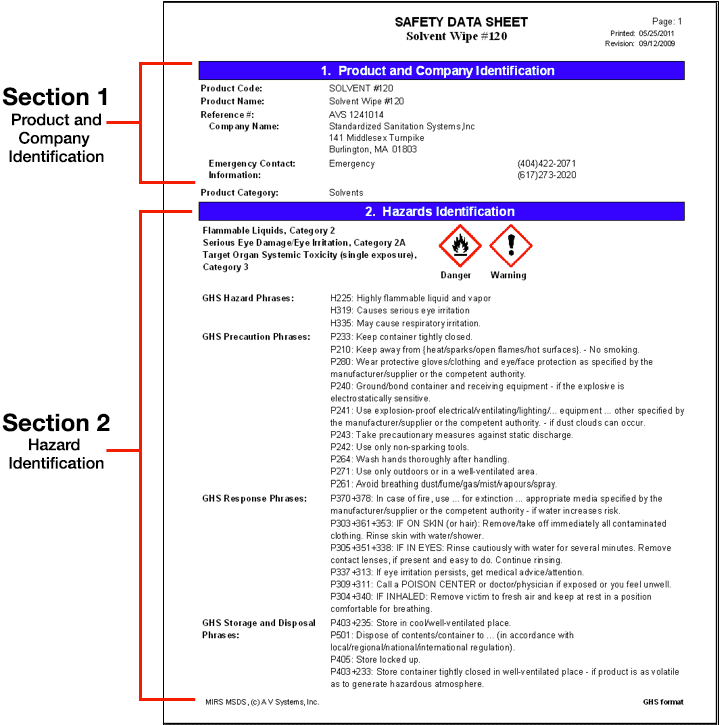
2. Collect the Information for Your GHS Label
Once familiarized with the six parts of a GHS label and where to find that information on a chemical's SDS, the next step is to start compiling specific information to make those labels. The following are examples of where to correctly place that information on a GHS label.
Start with the basics:
Product Name & Manufacturer Information
- Product Name: Begin by finding the product's name and any relevant CAS # located in section 1 of the SDS.
- Manufacturer's Info: Manufacturer's information is typically located at the end of Section 1. Include the name, address, and phone #.
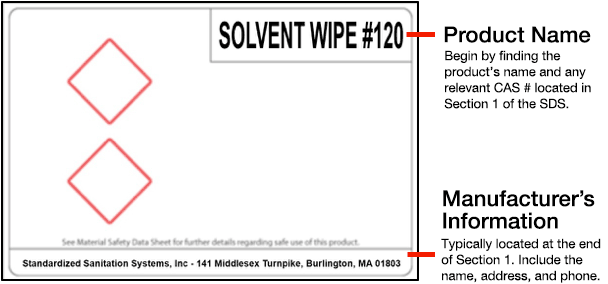
Next, determine which hazard pictograms are necessary.
Hazard Pictograms
- Hazard Pictograms: Pictograms can be found at the start of Section 2 of the product's SDS.

Finally, find the necessary information pertaining to the chemical's hazards.
Signal Word & Hazard/Precautionary/First Aid Statements
- Signal Word: Located in Section 2 of the SDS. Will state either Warning or Danger.
- Hazard, Precautionary, and First Aid Statements: Include any/all hazard, precautionary, and first aid statements listed in Section 2 of the SDS. The actual "H" and "P" codes do not need to be written (e.g. "H-100: Causes eye irritation" would be written as "Causes eye irritation").
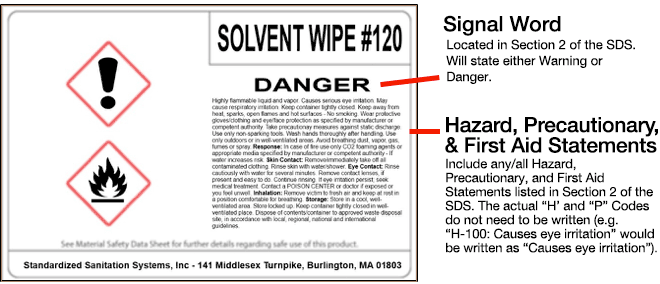
3. Format and Print Your GHS Label Using an Industrial Label Printer
The information collected can now be used to create a custom GHS label. To print with a LabelTac® printer there are two choices for formatting a label with software; the label can be made on a familiar program such as Microsoft Word or on the printer's included LabelSuite™ software. Either program will enable the user to enter their data and format the template to their specifications. In fact, there are no exact required formatting rules for GHS labels, but they still must contain the six required label components. The sample label below shows a possible label format.
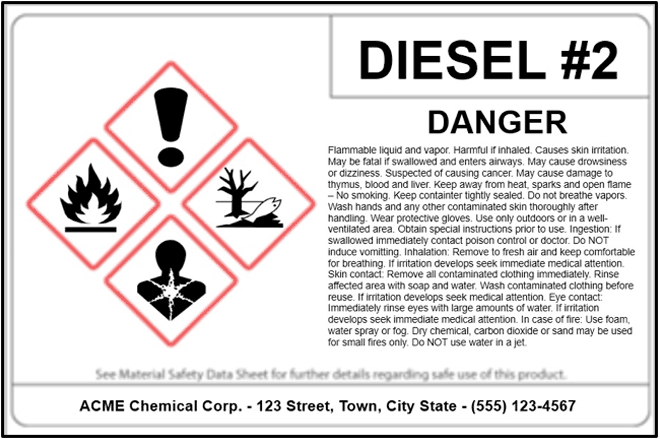
The easiest way to transfer the chemical's information from an SDS sheet is to copy and paste it from the SDS to a label template. Once the text has been moved, the size of the text can be formatted to better fit the template. LabelSuite™ label creation software also has the benefit of preformatted GHS templates available to make label creation easier. Templates can even be made from scratch as well.
Tips for Printing Labels:
- If using a monochrome printer, consider using pre-printed GHS label supply that includes red diamonds for hazard pictograms. This way only the black symbols and text are needed to complete the label.
- If using supply with pre-printed red diamonds and there are excess diamonds that won’t be used, cover the extra diamonds completely using a black diamond. To do this within the label creation software simply insert a black diamond over the red outline by choosing "Insert > Shape" or "Insert > Picture,” depending on the type of software being used.
- When adding hazard, precautionary, and first aid statements to a GHS label the font size may need to be reduced to fit all the information needed. Remember, the H or P codes don’t need to be added, just the statements themselves.
- Make sure product identifiers/chemical names and signal words are noticeable.
LabelTac® 4 PRO GHS Package
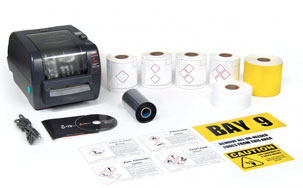
This LabelTac® package has everything you need to start printing GHS Labels today: including label supply, ribbon, blank GHS Labels, & a LabelTac® 4 PRO industrial label printer.
LabelTac® GHS Die-Cut Labels

Turn your LabelTac® into a GHS workhorse with these die-cut GHS Labels. Print custom labels for chemical containers with blank GHS label supply.
GHS Labeling Poster
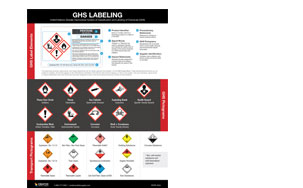
The GHS Labeling Poster is a quick reference guide to understanding GHS. Hang it in your warehouse to increase safety and knowledge of GHS labels.
Similar Articles
- GHS Label Information
- GHS: The Globally Harmonized System for Labeling [Updated 2019]
- Hazard Pictograms
- James Womack and the Creation of the Lean Enterprise Institute
- Arc Flash Label Requirements [2018 Updates]
- Material Safety Data Sheets [How-To Guide for Upgrading to SDS]
- Safety Data Sheets (SDS)
- What is HAZCOM? (Hazard Communication Definition + OSHA Standards)
- Hazardous Materials Identification System (HMIS Labels)


